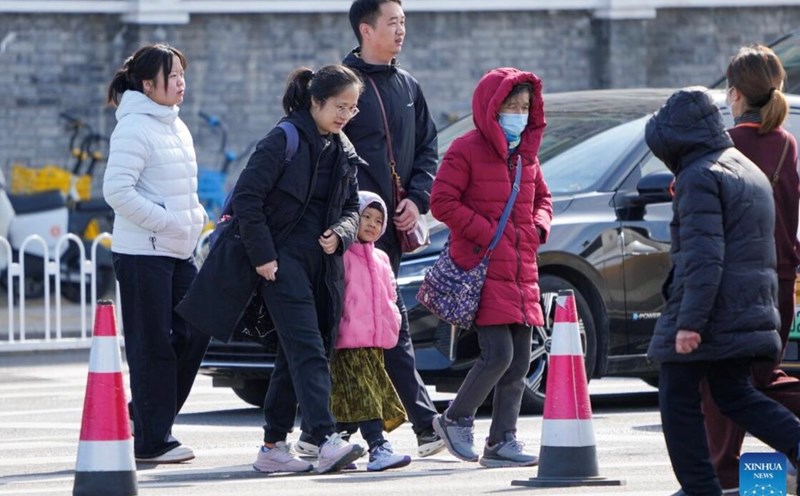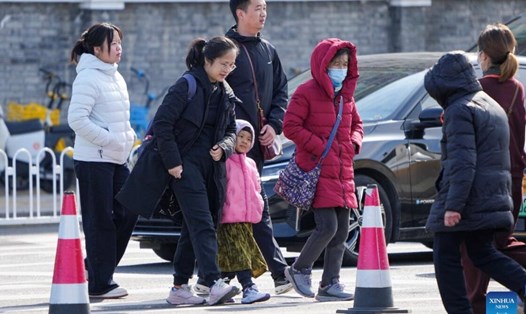China experienced an early cold spell in late October, with temperatures dropping more than 10 degrees Celsius in many areas. A large area along the Yangtze River recorded typical cold in November or even December, much earlier than usual.
According to the Journal of Science and Technology, temperatures in some areas such as Inner Mongolia, Hebei, Son Tay and Hubei reached historical lows in mid-October.
This has attracted the attention of the Chinese public and led to online discussions about this year's "super cold winter". Many netizens described the sudden change as "immediate freezing" and commented that "winter came overnight".
A netizen from southwestern Chinas Sichuan province wrote on Sina Weibo that temperatures had dropped to this level at least 15 days earlier than normal. Another person said that after just one night, they had to switch from a summer T-shirt to a winter jacket.
According to the National Climate Center (NCC), based on the results of the current domestic and international digital model, winter temperatures in China are expected to be close to or slightly above average. However, there are forecasts for significant temperature fluctuations, with separate cold air waves and warming waves.
Mr. Zhang Daquan - Head of Forecasting and Deputy Director of Climate Forecasting at NCC - pointed out that there are clear national standards to determine a cold winter or a warm winter.
According to China's standards, a season can only be characterized as a cold or warm winter when more than half of China's meteorological stations report average temperatures that meet strict criteria.
In essence, the meteorological terms "cold winter" and "warm winter" are not predictions, but reassessments of the temperature of the entire season. Statistics show that since the 1990s, China has gone through 6 cold winters, all of which occurred before 2012.
Zhang Daquan explained that in general, La Nina winters tend to have colder than normal temperatures across China, and this model was especially prominent before the 1990s. In addition, La Nina years also have a higher risk of snowstorms in northern regions and freezing rain at low temperatures in southern China. For example, the winters of 2007 2008 and 2017-2018.
However, due to the influence of factors such as global warming, since the beginning of this century, winter in China has often had higher than average temperatures even in La Nina conditions, and some La Nina winters have even been classified as warm winters, such as the winter of 2020-2021.
China's winter climate is also affected by many factors, including abnormalities in tropical sea surface temperatures, ice in the Arctic, snow cover and atmospheric circulation at medium and high latitudes. A comprehensive assessment of winter weather requires the integration of monitoring and forecasting data on the ocean, ice and atmosphere.












